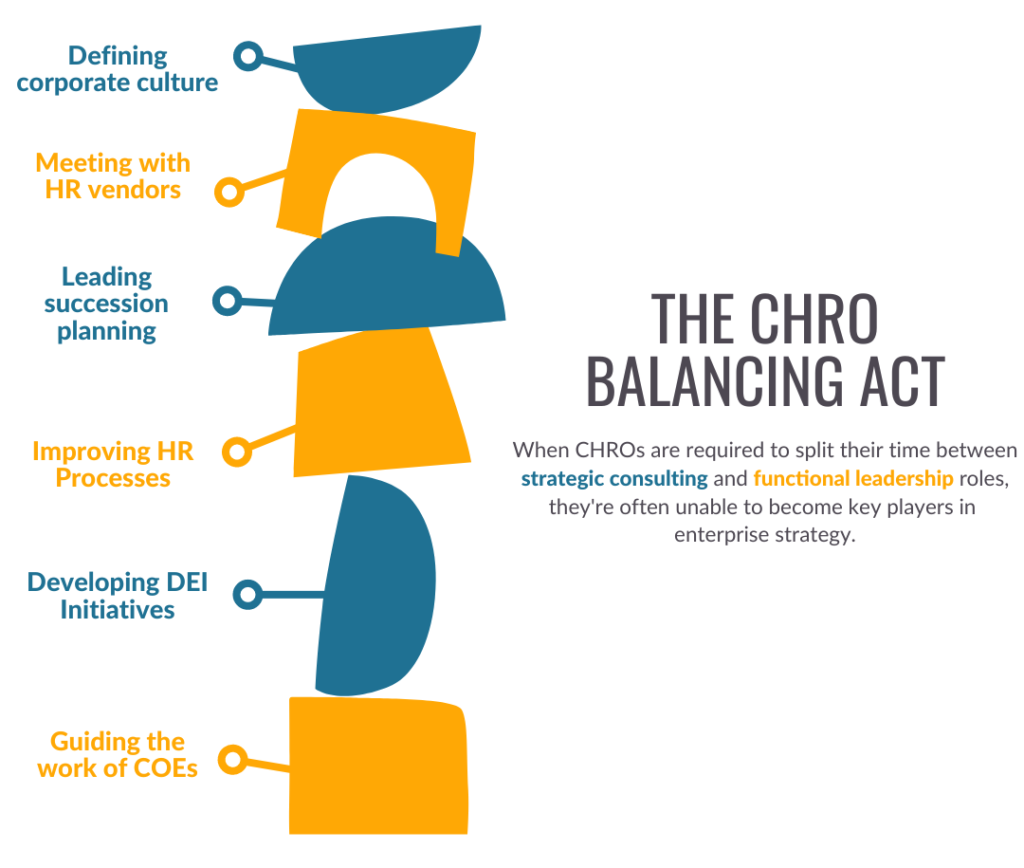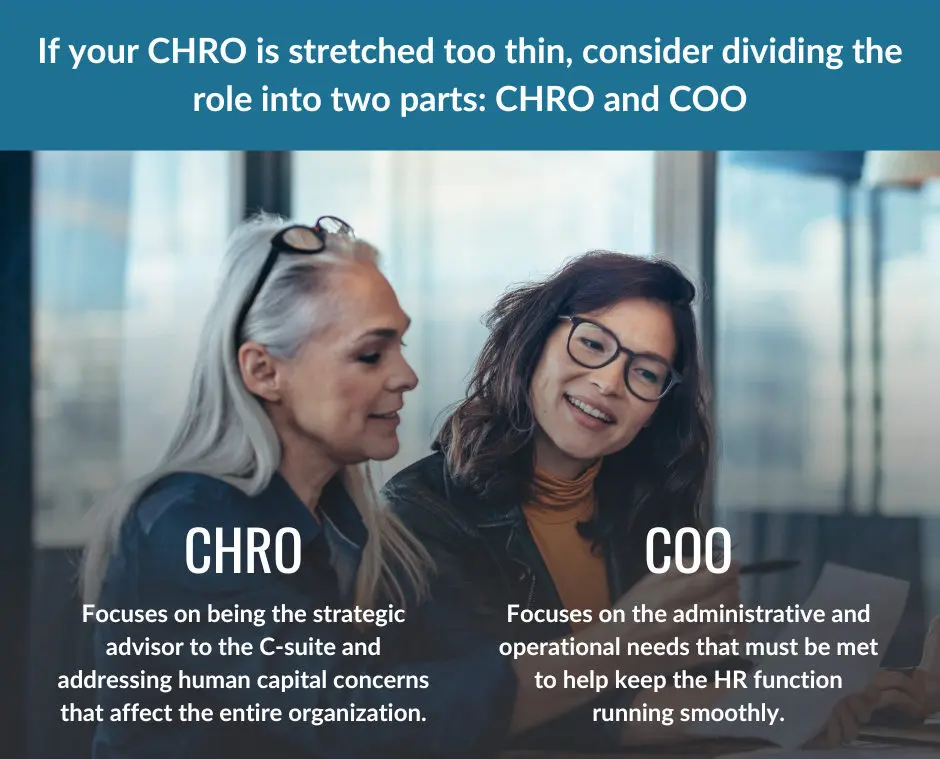It’s a scenario that plays out far too often. Your CHRO serves as a strategic advisor to top leaders, helping them set policies and define culture. This may seem like a full-time job, but they also have another role. They’re charged with leading the HR function and managing day-to-day matters like meeting with HR vendors and overseeing centers of expertise. Sound like too much for one person to shoulder?
If you said yes, you’re not alone. CHROs stretched too thin is one of the most common tension points in HR organizations. Let’s dive into the complicated job of a CHRO and explore some possible solutions.
Role 1: The CHRO as Strategic Advisor
This critical yet time-consuming role allows CHROs to help shape the workplace environment and culture. It means working with top leaders on complicated projects like:
- Outlining a philosophy and expectations for DEI and its role in the business
- Deciding how to address talent recruitment and retention
- Setting company-wide policies on performance, pay and rewards
Role 2: The CHRO as HR Function Leader & Manager
CHROs are also responsible for maintaining an efficient, effective HR function. This requires continual focus on projects like:
- Deciding what centers of expertise should work on
- Ensuring HR business partners are consulting effectively with their assigned business leaders
- Providing the final word on employee relations matters
An Impossible Task
As you can probably guess, the demands of these two roles mean that some responsibilities fall by the wayside. We often see this play out in a predictable way. Despite their best intentions, CHROs end up spending most of their time in strategic collaboration with the C-suite. HR teams are left largely to their own devices to sort out issues and juggle long lists of unprioritized to-dos.
The result is two-fold. CHROs fall short of expectations to be “key players in enterprise strategy.” Organizations often see HR teams as being inefficient and ineffective.
A Possible Solution
One person can’t do two people’s jobs – it’s impossible, even for the most dedicated CHRO. A logical solution is to split the role into two closely connected parts: a CHRO who serves as strategic advisor and an HR chief of staff or chief operating officer (COO). For simplicity, we’ll refer to this second role as the COO.
- The CHRO focuses on being the strategic advisor to the C-suite and serves as the organization’s key HR thought partner.
- The COO runs the HR function, overseeing centers of expertise, approving new HR systems and services and serving as the point of contact and final decision maker for all of HR’s subfunctions.

This solution allows the CHRO devote the majority of their time to shaping corporate strategy and ensuring that the organization remains competitive in the talent marketplace. The COO can keep the HR function humming along smoothly by overseeing everything from budgets to labor relations issues. With two people at the helm, the strain is reduced and each both the COO and CHRO can fully address the needs of their roles.
This is the second in our series of blogs about reducing tension points in your HR function. Read the first installment here, and learn more by downloading our guide to maximizing the HR model.
